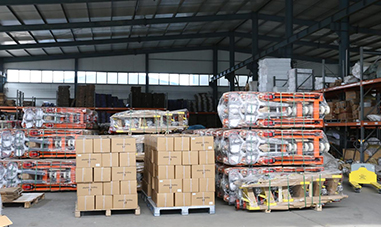


Industrial Fall Protection Equipment Ensuring Safety in the Workplace
In industrial settings, safety is paramount. Among the various hazards faced by workers, falls from heights rank as one of the most significant risks. The Occupational Safety and Health Administration (OSHA) estimates that falls are responsible for approximately 36% of all construction-related fatalities. This statistic underscores the importance of comprehensive fall protection measures. Industrial fall protection equipment plays a crucial role in safeguarding workers and preventing accidents. This article explores the various types of fall protection equipment, their purposes, and their importance in maintaining a safe working environment.
Types of Fall Protection Equipment
1. Personal Fall Arrest Systems (PFAS) PFAS are essential for protecting workers who are exposed to fall hazards. These systems typically consist of a full-body harness, lanyards, and anchorage points. The full-body harness distributes the force of a fall over the body, reducing the risk of injury. Lanyards connect the harness to an anchor point and may include shock-absorbing features to minimize the impact of a fall. Proper usage of PFAS is critical and requires training to ensure that workers are equipped to handle the equipment safely.
2. Guardrails Guardrails are physical barriers installed around edges and openings to prevent falls. Typically used on rooftops, elevated platforms, and stairways, guardrails provide a sturdy, visual deterrent to accidental slips and falls. OSHA regulations specify the height and load requirements for guardrails, ensuring they effectively prevent falls without compromising structural integrity.
3. Safety Nets Safety nets are suspended below elevated work areas to catch falling workers or tools. They are particularly useful in construction and demolition sites where workers are exposed to significant heights. Safety nets can absorb the energy of a fall, providing an additional layer of protection when other forms of fall protection, such as PFAS, are not feasible. They must be properly installed and maintained to ensure effectiveness.
4. Anchorage Systems An anchorage system provides a secure attachment point for fall protection equipment. It can include permanent fixtures, like beams or columns, or temporary anchors designed for specific jobs. The strength and stability of an anchorage point are vital, as they must withstand the forces generated during a fall. Regular inspection and maintenance of anchorage systems are imperative to ensure they are safe for use.

5. Ladder Safety Equipment Ladders are common tools in industrial settings, and they can pose significant fall risks. Ladder safety equipment, such as stabilizing devices, ladder safety systems, and personal fall restraints, help prevent falls when using ladders. Workers should be trained in ladder safety protocols and the correct use of safety equipment to minimize risks associated with climbing.
Importance of Fall Protection Equipment
The implementation of proper fall protection equipment not only meets legal safety standards but also fosters a culture of safety within the workplace. Employers who prioritize fall protection can significantly reduce the likelihood of accidents and injuries, leading to decreased downtime, lower medical costs, and improved worker morale. Moreover, investing in high-quality fall protection equipment can enhance overall productivity by allowing workers to complete tasks safely and efficiently.
Training is paramount in ensuring that workers understand how to correctly use fall protection equipment. Regular safety meetings and refresher courses can reinforce proper practices and encourage employees to voice concerns regarding safety equipment or protocols. An informed workforce is a critical component of an effective fall protection strategy.
Conclusion
Industrial fall protection equipment is essential for safeguarding workers from one of the leading causes of workplace injuries and fatalities. By investing in quality equipment, ensuring proper training, and fostering a culture of safety, employers can create a safer working environment for their employees. As industries continue to evolve and heights become more prevalent in operations, the importance of effective fall protection measures will only increase. It is the responsibility of both employers and employees to prioritize safety and adhere to best practices when it comes to fall protection in the workplace. Through vigilance, training, and the right equipment, the risks associated with falls can be significantly mitigated, ensuring that workers return home safe after a day on the job.



